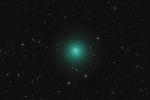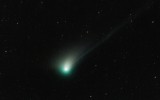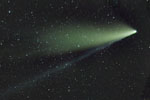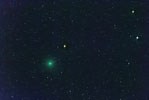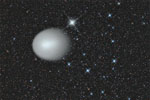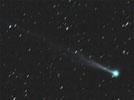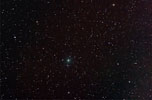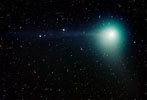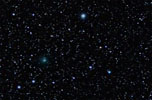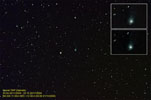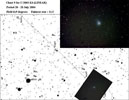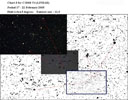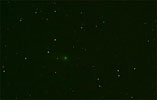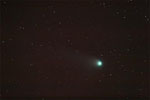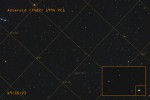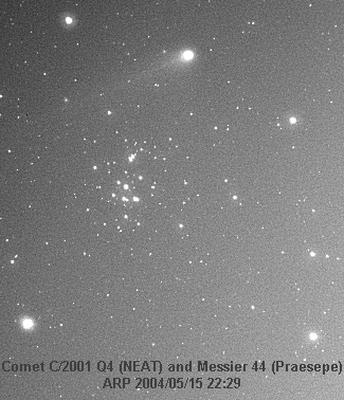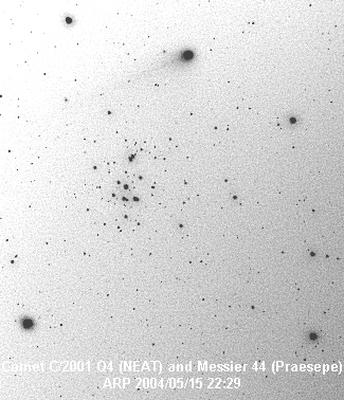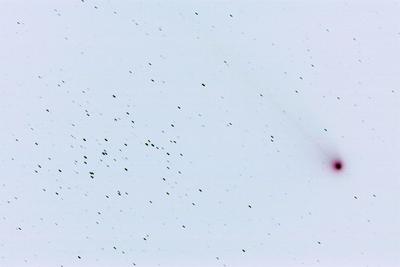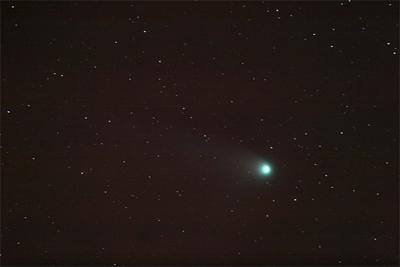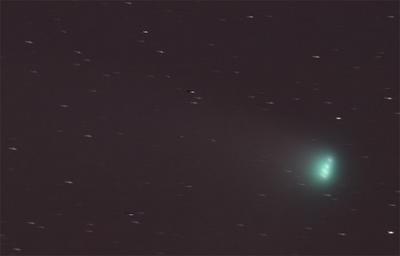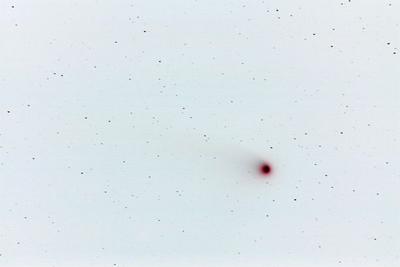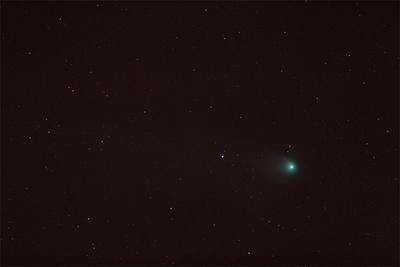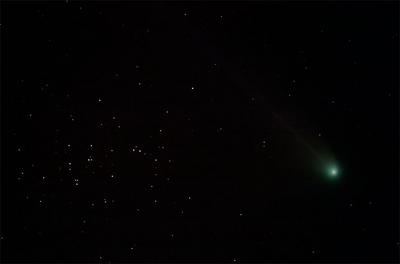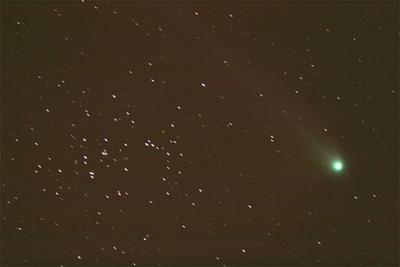C/2001 Q4 (Neat)
This comet was discovered in Aug 2001 by the Near-Earth Asteroid Tracking (NEAT) program.
A non-periodic comet, when observed near perihelion on 15th May 2004 it's hyperbolic trajectory indicated that it will be flung out of the Solar system.
On 6th May 2004, the comet passed within 0.32 AU's (≈48 million km) of the Earth.
For more info see the Wikipedia entry.
Comets
Comets are small, but nonetheless significant visitors to the Solar system.
Typically they have a mass of about one-billionth × that of the Earth and their nucleus is just a few kilometres across. The nucleus is the core of the Comet and consists of a 'dirty snowball' of dust, water ice, carbon dioxide, ammonia and methane.
Comets are classified as either 'long-period' or 'short-period' depending on how often they approach Earth. Long-period comets appear at intervals of over 200 years and originate in the Oort Cloud, a spherical halo of icy bodies that lies about 40 AU's from the Sun. Short-period (or periodic) comets are thought to originate in the Kuiper Belt, a region of icy material that lies between the orbits of Neptune and Pluto. These are also sub-divided into two further categories, with Halley Type having periods of 20-200 years, and Jupiter Type with a period of less than 20 years.
As Comets approach the Sun, at about a ditance of about 3 AU's, they develop an extended region of gas and dust called the coma. When the Comet temperature reaches 215 K (-58° C) sublimation of water ice to vapour occurs. This material flows outward at approx 0.5 km/s and can extend 105 to 106 km in size. The coma then becomes visible from reflected sunlight, and may also emit radiation as the sunlight excites the gas.
If the Comet moves closer to the Sun, it may develop a large visible tail of up to 1 AU long. The tail actually consists of two tails. There is a gas tail or an ion tail which appears to point away from the Sun, and a dust tail which lies behind the Comet in the wake of it's path.
The gas tail (or ion tail) is due to the solar wind hitting the comet and contains a variery of molecular ions. Emission from CO+ is responsible for the blue colour of the tail which can extend 108 km.
The dust tail which trails behind the Comet is from material that is ejected by radiation pressure. These continue to follow a Kepelerian orbit and the dust tail can also be 107 km long.
Comets are brightest when they reach perihelion (their closest distance to the Sun), and they mostly traverse elliptical orbits, although their eccentricity and periodicity vary greatly.
Long-period comets are also of particular interest to scientists, as the Oort cloud is sufficiently far enough away to remain unaffected by heat from the Sun. They are therefore thought to be composed of original material from the formation of the solar nebula, whilst Short-period comets from the Kuiper belt provide information on the the formation of the outer Solar system.
For more info. see the Wikipedia entry on Comets.
